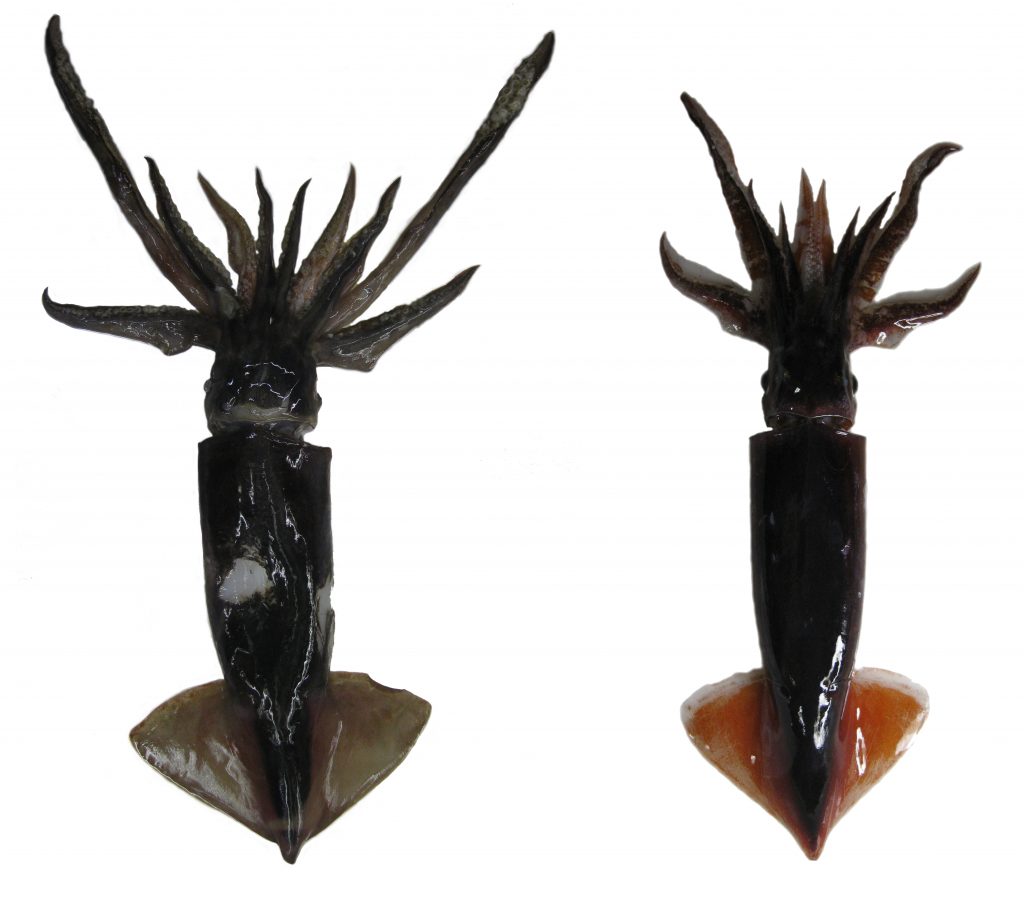Uncovering Cryptic Species and More with the Biodiversity Heritage Library
What does it mean for a species to be “cryptic”?
In the biological sciences, “cryptic species” are morphologically indistinguishable yet distinct species. In other words, two or more organisms may look the same and yet represent different species.
With the rise of molecular genetic techniques, the identification of cryptic species is increasing. Many previously-considered cosmopolitan species are proving to actually be multiple species each occupying segments of the original distribution range. Identifying cryptic species is especially important for conservation and resource management, which operate at the species level and rely on accurate identification of range and population size to effectively implement policies and programs.
The neon flying squid Ommastrephes bartramii (Lesueur, 1821) has long been considered a monotypic, cosmopolitan species. The second-largest representative of the ecologically and commercially important family of squids Ommastrephidae Steenstrup, 1857, the species is currently considered to have global distribution.
Recent research has shown, however, that this “monotypic” species may not be so “mono” after all.
Using molecular species delimitation methods, Dr. Fernando Á. Fernández-Álvarez, an early researcher at the Institut de Ciències del Mar (CSIC) in Barcelona, and his colleagues[1] found that what is currently described as Ommastrephes bartramii actually represents four different species. After examining previous descriptions in the literature, three synonymized names have been proposed for resurrection accordingly. This research comprises one of four chapters in Fernández-Álvarez’s Ph.D. thesis, and the manuscript is currently under preparation for submission to a journal.

Two Ommastrephes spp. specimens collected in North Atlantic waters during the two oceanographic cruises: MAFIA (left, collected near Cabo Verde 18ºN 20ºW in April 2015) and BATHYPELAGIC (right, collected in the middle of the Atlantic 40ºN, 19ºW, June 2018). Although both specimens basically look the same, each one belongs to a different species. Molecular data revealed that Ommastrephes bartramii is actually a species complex instead of a single species, as previously thought. BHL has been essential for tracking previous synonymized names to resurrect in order to name each species. Image credit: Catarina P. P. Martins & Fernando Á. Fernández-Álvarez (left) and Fernández-Álvarez (right).
The Biodiversity Heritage Library proved to be a vital resource for this research, allowing Fernández-Álvarez to easily locate literature about relevant synonymized names of Ommastrephes bartramii, many of which were published in the 19th century.
“Especially when it comes to historic synonymized names, it is difficult to find literature mentioning a particular name beyond its description,” explains Fernández-Álvarez. “I used BHL’s taxon search tool to look for works that mention each particular name. This tool was very useful for finding many works!”
Fernández-Álvarez has been studying cephalopod phylogenetics, systematics, and taxonomy, among other fields, for four years. Prior to this, he spent six years studying nemertean taxonomy and systematics. It was that research that first led him to BHL.
“During part of my early work on nemertean taxonomy, I struggled with the essential Otto Bürger’s book Die Nemertinen des Golfes von Neapel, which is obviously written in German,” recalls Fernández-Álvarez. “I spent many days with a German-Spanish dictionary and a copied version of the book trying to decipher the meaning of many passages. It was torture. Finally, I googled the book and found it in BHL with the OCR beautifully written out! I copied the passages and used automatic translation tools to read it. It was a huge help!”

Fernando Á. Fernández-Álvarez taking samples with a van veen grab sampler in the oceanic cruise Formed IV (June 2014).
Over the years, Fernández-Álvarez has used BHL to varying degrees depending on his research focus. Not surprisingly, his favorite feature is the taxon search tool. He typically uses either this tool or an author search to locate relevant literature, reading the titles online and downloading content (with OCR) as needed as a full PDF or using BHL’s custom PDF generator to select specific pages.
“When it comes to systematics or taxonomy, BHL has become a fundamental tool,” affirms Fernández-Álvarez. “When I am focused on these fields, I may use BHL every day each week!”
We are thrilled to know that BHL is empowering discovery around the globe and allowing researchers to access vital materials. User stories are a powerful testament to BHL’s impact.
“I think BHL fulfills a truly important task,” lauds Fernández-Álvarez. “Many of the books in the library are truly difficult to find and now they are freely available around the world. Many of the works I needed to find to advance in my research, I was able to obtain through you. THANKS!!!”
Thank you, Dr. Fernández-Álvarez, for sharing your research and BHL story with us.
In collaboration with our global partners and through an unwavering commitment to open access, we are confident that BHL will continue to transform research in unprecedented ways.
[1] Kathrin S. Bolstad, Heather E. Braid, Manuel Haimovici, Chingiz M. Nigmatullin, Pilar Sánchez, and Roger Villanueva.





Leave a Comment